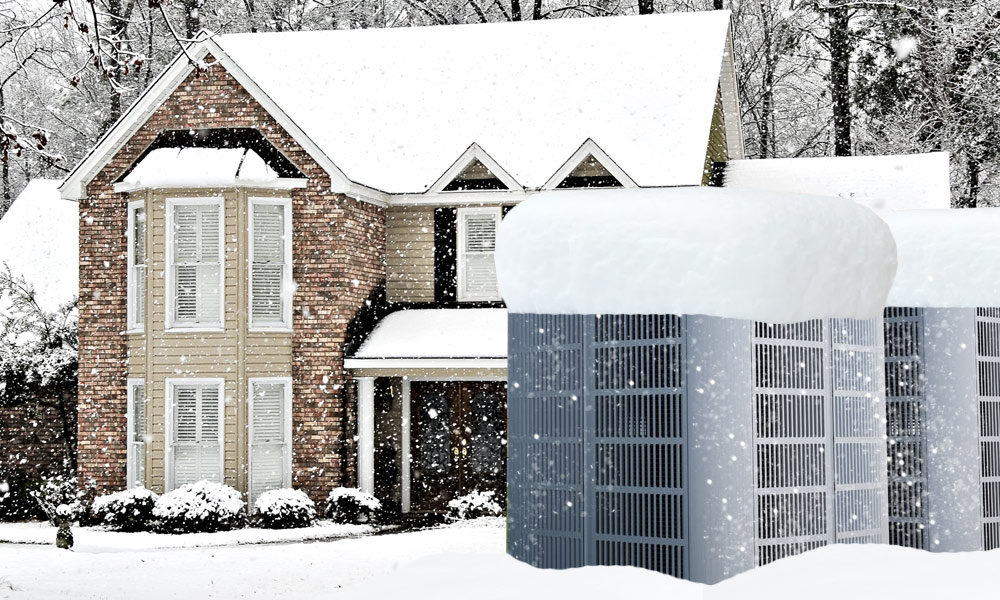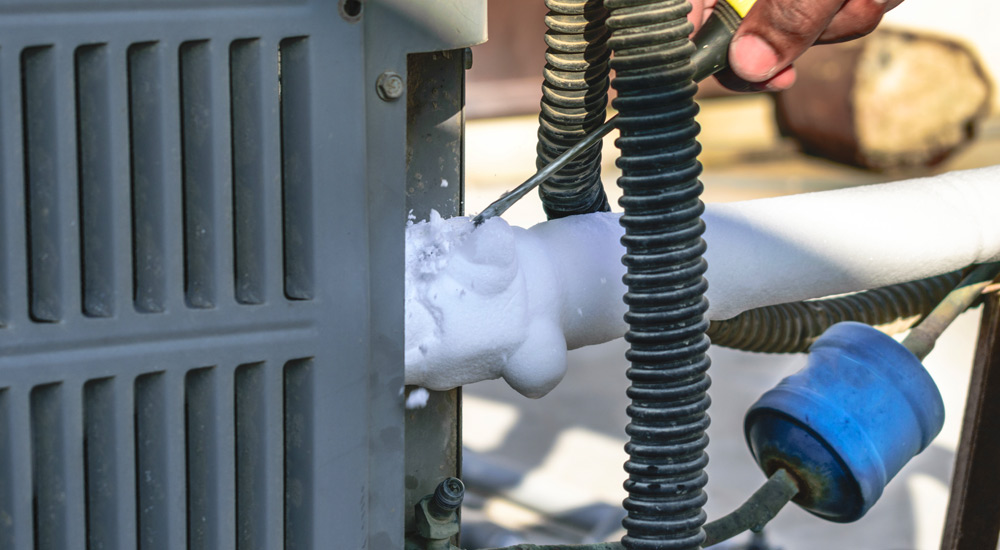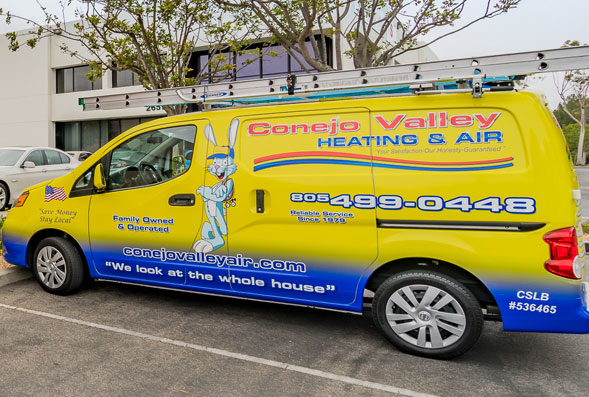 Winter is challenging for HVAC systems because they must work harder to maintain desired indoor temperatures. Without proper servicing, a heating and cooling system will barely deliver the expected performance. It will consume more energy yet not keep your home as comfortable as you desire. What’s worse, your units could suffer irreversible damage, which calls for a replacement that might overstretch your budget.
Prioritizing winter HVAC maintenance will prepare your heating and cooling unit for whatever Mother Nature brings during the cold season. That way, you enjoy more comfort without spending a fortune.
So, if you intend to keep your home warm and energy-efficient this coming winter, below are the HVAC maintenance essentials to keep in mind.
Winter is challenging for HVAC systems because they must work harder to maintain desired indoor temperatures. Without proper servicing, a heating and cooling system will barely deliver the expected performance. It will consume more energy yet not keep your home as comfortable as you desire. What’s worse, your units could suffer irreversible damage, which calls for a replacement that might overstretch your budget.
Prioritizing winter HVAC maintenance will prepare your heating and cooling unit for whatever Mother Nature brings during the cold season. That way, you enjoy more comfort without spending a fortune.
So, if you intend to keep your home warm and energy-efficient this coming winter, below are the HVAC maintenance essentials to keep in mind.
Table of Contents
Importance of HVAC System in Winter
Here are a few compelling reasons why HVAC maintenance is necessary during winter.» More Reliability
Among the most prominent benefits of HVAC winter maintenance is increased system reliability. Furnace breakdowns can be frustrating, especially if you are unfamiliar with HVAC troubleshooting and no local technician is available for emergency repairs. A well-maintained system provides your family with consistent comfort.» Energy and Cost Savings
Keeping an HVAC system in top shape helps reduce energy consumption and utility bills. Multiple or recurring component issues degrade your system’s performance. Maintenance serves to prevent component failure and sustain the system’s peak efficiency. That way, your home stays comfortable with reasonable energy consumption and bills. Besides minimizing HVAC repairs, preventive winter maintenance is a sure ticket to extend your system’s lifespan. That postpones a potentially expensive and frustrating replacement.Related Article: How to Improve your HVAC System Energy Efficiency?
» Improved Indoor Air Quality
According to the Environmental Protection Agency (EPA), indoor airborne contaminants can be 2-5X higher than their outdoor counterparts. Sometimes the amounts can be over 100X higher. Those are critical levels health-wise, particularly for individuals vulnerable to allergy flares (asthma and other respiratory issues). Comprehensive HVAC winter maintenance includes filter replacement and duct cleaning to ensure only filtered and clean air is distributed throughout your home.
How Winter Weather Impacts Your HVAC System
Below are a few ways the cold winter weather affects HVAC systems.» Cold, Arid Air is Harder to Heat
Furnaces work harder to heat dry, cold air. The apparent drop in relative humidity during winter makes your home’s interior feel colder than it really is. As a result, the recommended thermostat range of 71-77 degrees Fahrenheit will hardly generate truly comfortable results. It also means your furnace will need to run more cycles to keep your indoors warmer, thus raising the energy bills. Whereas it is tempting to crank up your thermostat setting, you only end up stressing your heating system.» More Heat Losses
The temperature difference between the outside and inside of an uninsulated or poorly insulated home results in faster heat loss. As you have already guessed, the heating unit will have to work harder to maintain the thermostat temperature setting.» Ice and Snow-Related Issues
Although Southern California weather is not affected by this, those areas that experience extremely low temperatures are no stranger to snow and ice, which, unlike rain, do not evaporate right away. That means homeowners must prepare for a unique set of HVAC challenges. Snow and ice can freeze your heating unit, triggering an emergency shutdown and pipe damage. When moisture penetrates your AC, it can freeze into ice, expand and bend the coil fins. The issue may manifest in loud noises coming from your outdoor unit. The ice can melt, seep further inside, re-freeze, and eventually wreak havoc to the internal components. Falling icicles can cause physical damage to your outdoor units, necessitating emergency (and often expensive) repairs.
Too much snow blocks intake vents and furnace exhaust, restricting airflow through your HVAC system. Your equipment strains to overcome the impediment, which translates into higher energy consumption. The extra strain can damage the heating and cooling components, costing you thousands of dollars in HVAC repairs and replacements.
Falling icicles can cause physical damage to your outdoor units, necessitating emergency (and often expensive) repairs.
Too much snow blocks intake vents and furnace exhaust, restricting airflow through your HVAC system. Your equipment strains to overcome the impediment, which translates into higher energy consumption. The extra strain can damage the heating and cooling components, costing you thousands of dollars in HVAC repairs and replacements.
7 Common HVAC Problems During Winter
Find below the top ills that plague HVAC systems in winter:1. Frozen Pipes
The period between December and February is synonymous with freezing temperatures. And while daytime temperatures may surpass the freezing point, the night temperatures can quickly freeze your outdoor pipes and coils. That impedes your HVAC system’s functionality, leaving your home cold and uncomfortable. Still, frozen water can expand and cause a pressure buildup that can burst the pipes or coils.2. Clogged Air Filters
Air filters prevent dust and debris penetration into HVAC units. However, filters are more susceptible to clogging when outside temperatures are beyond normal, owing to the heightened need for heating or cooling. A clogged filter impedes airflow, putting an extra strain on the blower motor. The component draws a larger electrical load, leading to higher electrical bills. Continued airflow restriction results in heat exchanger overheating. The outcome is frequent short cycles that waste energy and cause unnecessary wear and tear. In worse cases, the internal components of your heater suffer damage, setting you up for costly HVAC repairs or replacements. These are just a few issues that make filter replacement an integral part of HVAC winter maintenance.3. Uneven Heat Distribution
It is frustrating when one room feels like a sauna while an adjoining one feels like a walk-in freezer. Uneven heat distribution is to blame. Common culprits include:- Broken fan motor
- Dust/debris accumulation in the heating and cooling system
- Leaking or inappropriately sized ducts.
4. Faulty Thermostat
Thermostats are designed to be long-lasting but not indestructible. Sensors malfunction, computer chips fail, wires come loose, and batteries fail, compromising the device’s calibration. Whatever the thermostat issue, you may notice the indoor temperatures plummeting regardless of your furnace being healthy. The solution could be as simple as replacing the batteries or cleaning or recalibrating the thermostat. Talking of calibration, tape an accurate thermometer beside your thermostat and compare the readings after 15 minutes. Anything beyond a variance of +/- 5 degrees Fahrenheit calls for a thermostat service.Related Article: Get Your Furnace Ready for this Winter – Furnace Tune-up
5. Malfunctioning Heat Pump
Heat pumps consist of an indoor compartment and an outdoor unit connected by a refrigerant line. In heating mode, the outdoor unit extracts heat from the air outside your house. This converts the refrigerant into a cold gas that flows to the indoor unit via the connecting line. The indoor compressor pressure heats the cold gas. Next, air flows over the hot gas to warm your home. Heat pumps can suffer many ills during winter, from clogged filters to frozen coils. Ice buildup on coils and fins can hamper heat pump function. Modern heat pumps have automatic defrost settings triggered into action by excessive ice accumulation. But still, you should take extra steps to protect your equipment from freezing, including cleaning or replacing the filter and clearing away any excess snow around the outdoor unit.6. Broken Pilot Light
Propane or gas-powered heating systems rely on a pilot light for ignition. Most older models have a standing pilot light that runs 24/7. In newer models, pilot lights work on-demand. A pilot light can fail to ignite due to a dirty or damaged flame sensor, which means your home will suffer cold and uncomfortable temperatures. If you suspect your broken light is damaged, have a heating technician clean or replace it.7. Carbon Monoxide (CO) Leaks
Carbon monoxide is a by-product of incomplete fuel combustion in gas-powered heaters. Being odorless and colorless, CO can be a silent killer in the absence of proper safety measures. The gas should safely vent out of your home via the furnace’s flue pipe. However, a cracked heat exchanger or compromised venting system increases the risk of carbon monoxide leaks and air poisoning in your home. As the cold season creeps in, have an HVAC pro check your heater and ventilation system and install a CO detector in your home to prevent potential hazards.What Can You Do to Help Your HVAC System During Winter Weather?
1. Frequent Air Filter Replacements
Replacing your air filter is one of the most important things you can do to keep your home comfortable during the cold winter months. A clean filter will keep air circulating smoothly through your system without costing you extra money. Contrarily, a dirty, clogged filter can restrict airflow and make your system work harder to keep your home at a comfortable temperature. This can cause a furnace to overheat and break down. A good rule of thumb is to replace your HVAC filter every 30 days in winter. Pay attention to the MERV rating on the filter. It is an acronym for Minimum Efficiency Reporting Value, which measures a filter’s efficiency. A higher MERV rating means cleaner air and better HVAC performance. Experts recommend the standard MERV 13, but you could consider HEPA filters whose minimum rating is MERV 17. But make sure your choice of a filter is compatible with your HVAC system.2. Declutter Around Your HVAC Units
Any form of blockage impacts your system’s performance and lifespan. Debris can pile up pretty quickly in and around an indoor and outdoor HVAC unit, choking off airflow. Leaves, grass, and twigs can damage some components, including the compressor. Keep foliage, trash cans, recycle bins, and other forms of clutter away from the outdoor unit. You will also need to clean the space around your units periodically.3. Inspect the Ducts and Vents
Ducts are the aluminum/galvanized steel tubes running from your furnace or AC to distribute conditioned air throughout your home. Vents are the points where air ducts open into your house. Make sure no rugs, furniture, or wall hangings obstruct these openings. While sealing off unused vents might sound like a good idea, it could compromise your system’s intended air pressure balance. That could result in increased energy bills, comfort issues, and system failures. Take the time to inspect the ducts. HVAC duct leakage is a major cause of poor indoor air quality and health problems such as asthma and allergies. Check and fix loose joints and connections. You can repair duct leaks using HVAC tape or duct sealant. Air ducts must be clean for optimal indoor air quality and HVAC system performance. Use a hose attachment to vacuum out any dust and dirt from the tubes.4. Adjust Your Thermostat
Your thermostat setting has a significant impact on your comfort and your utility bills. For many people, setting the temperature higher than they need is a common mistake that costs them money without really improving comfort levels. That is why thermostat readjustment remains an important part of the HVAC winter maintenance checklist. Consider lowering the temperature while sleeping, at work, or out of town for extended periods. A programmable thermostat makes your work easier by allowing you to assign different temperatures to different times of the day. From there, leave it to adjust the temperatures automatically.5. Clear the Exhaust Pipe
Exhaust pipe or furnace flue expels combustion gases from the heat exchanger to outside your home. A blockage in this pipe results in back pressure that forces the toxic gases into your house. Inhaling the byproducts of combustion could cause air poisoning and various health issues, from headaches, loss of consciousness to nausea. In the worst case, CO can cause fatalities. Ensuring the working order of your exhaust pipe and clearing any blockage goes a long way to protect your health and maximize your HVAC system’s efficiency.Related Article: Heating and Furnace Maintenance Tips to Help You Keep Warm All Winter












